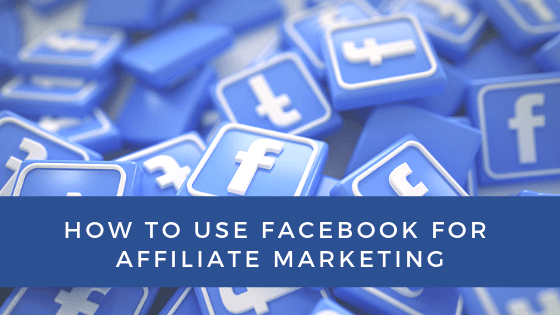Facebook Ads Vs. Google Ads: which one is for you?

Hot Sales vs. Cold Sales
When someone is actively searching for a product or service, they go to Google and type in a query. This user is showing an intent to acquire that product or service. If you have a product or service that satisfies this search, then you can use Google’s ad platform to deliver your ad to that user.
Google also has the advantage of Google Shopping. These shopping results show up when people are searching for specific products and Google will show a product image, any reviews, the price and more. Google has optimized their platform well to deliver the best results to their users and their advertisers. The conversion rates of this intent-based marketing are usually very high since you’re providing something they are looking for.
Facebook on the other hand is more like a cold-selling approach. Facebook ad campaigns can target people that may be interested in your products based on their interests and demographics, but they’re not actively looking for you. They’re on Facebook to connect with their friends and family. Therefore, you have to capture their attention and encourage them to perform an action such as buy or signup. It’s a little more work to sell people that aren’t looking to be sold.
Ad Placement Options
Facebook and Google are both very powerful platforms with each having an incredible reach. Their display and placement options allow you to connect with people almost everywhere on the web.
With Facebook, you can reach people within the Facebook ecosystem. This includes Facebook, Instagram and apps/websites that have the Facebook ad code implemented on their site. You can check out their article on available placements for more information.
Google’s reach, however, expands across the internet. It includes but is not limited to Gmail, YouTube, Google Search, Google Shopping and websites/apps that have Google Adsense code implemented on their site. Even Reddit has Google ads displayed on their website. This help article from Google can break down all of the advertising options on Google because that’s hours’ worth of content itself.
Ad Targeting
There’s no question that Facebook and Google have a lot of information on their users. They get this information either from users directly, from digital properties that have their code installed on the site and many more sources.
When you create your Facebook profile, you give it some demographic information. This includes your age, your sex and where you live. You can even optionally tell them if you’re in a relationship and if you’re interested in men or women.
You also feed Facebook with more data by liking pages and posting content. If you like brands like Sephora and Ulta, or share makeup videos, then Facebook will gather that you’re interested in makeup. You will probably see ads for makeup.
Google can use your past search data and recently visited websites to determine more information about you. Even if you’re not signed in with an account, their algorithm is constantly trying to learn what they can about you. Not just so that they can show you relevant search results, but relevant ads as well. Of course, to ensure that your targeting is effective, you should perform some market research.
Targeting Options
With Facebook, you can target people based on their interests and demographics. For example, you can reach a young mother of 25 in San Francisco, with a newborn baby, that likes jogging, has an iPhone and is interested in fashion.
On Google, you can target people based on their searches, affinity categories they belong to, and even the type of content they watch on YouTube.
On both platforms, you can also use retargeting to show as that have interacted with you brand.
Social Proof for Ads
One of the most appealing things about advertising on Facebook is that your posts within the feeds look and act like regular posts on the platform. This includes displaying any likes, comments and shares. This type of engagement is called social proof. It’s proof that other people like your content enough to attach their name to it. If other people are doing it, then it must be worth doing as well.
Think about two similar cafes across the street from each other. If one has a lot of people at it and the other has none, then you’d want to go to the busy restaurant. Apply the same concept to a Facebook ad. If there’s a lot of engagement, then people believe that others must think it’s good.
Another form of social proof on Facebook is video views.
With Google, social proof is not possible except for on Google Shopping. If your product has reviews, then Google Shopping will display them. Other than Google Shopping, you do not get the value of social proof on your ads on the Google platform.
Organic Reach
Another thing that is great about advertising within the Facebook feed is that you can earn organic impressions and potentially go viral.
When people tag their friends in the comments or share a post, that’s showing your ad to people that didn’t get targeted directly by your ads. So you may have paid for 1,000 people to see your ad, but it has a chance to be seen by much more than that, depending on how engaging the content is. This can be huge for small businesses with a low marketing budget.
Unfortunately, Google doesn’t have this type of reach with their platform. Once you turn off your ads, the 1,000 people that you paid to see your ad will be the only people that see it.
Facebook extends their organic reach even further by reminding people of things they’ve shared via their memories feature. This is where Facebook shows you something you previously shared.
How much?
Facebook Ads are cost-per-click and cost on average $1.72. It has a required minimum daily ad spend equal to two clicks per day. Google Ads has an overall average cost per click of $2.69. Google Ads does not have a minimum ad spend, though the average small business sets a daily budget of around $30 to $75 per day.

Facebook vs Google: Which Platform Should You Use?
To answer this question, you need to know what your objective is and if there’s intent for your product. If you have a product or service, then try with Google ads first because you can bid on keywords around your product information. That capitalizes on buyer intent.
If your product is new and there aren’t any searches around it, then you should use Facebook ads to educate the market and get in front of audiences.
Both Facebook and Google ads offer businesses an opportunity to increase brand awareness and grow sales, but the final ROI depends on your company’s targeting, ad spend, and creative ad elements.